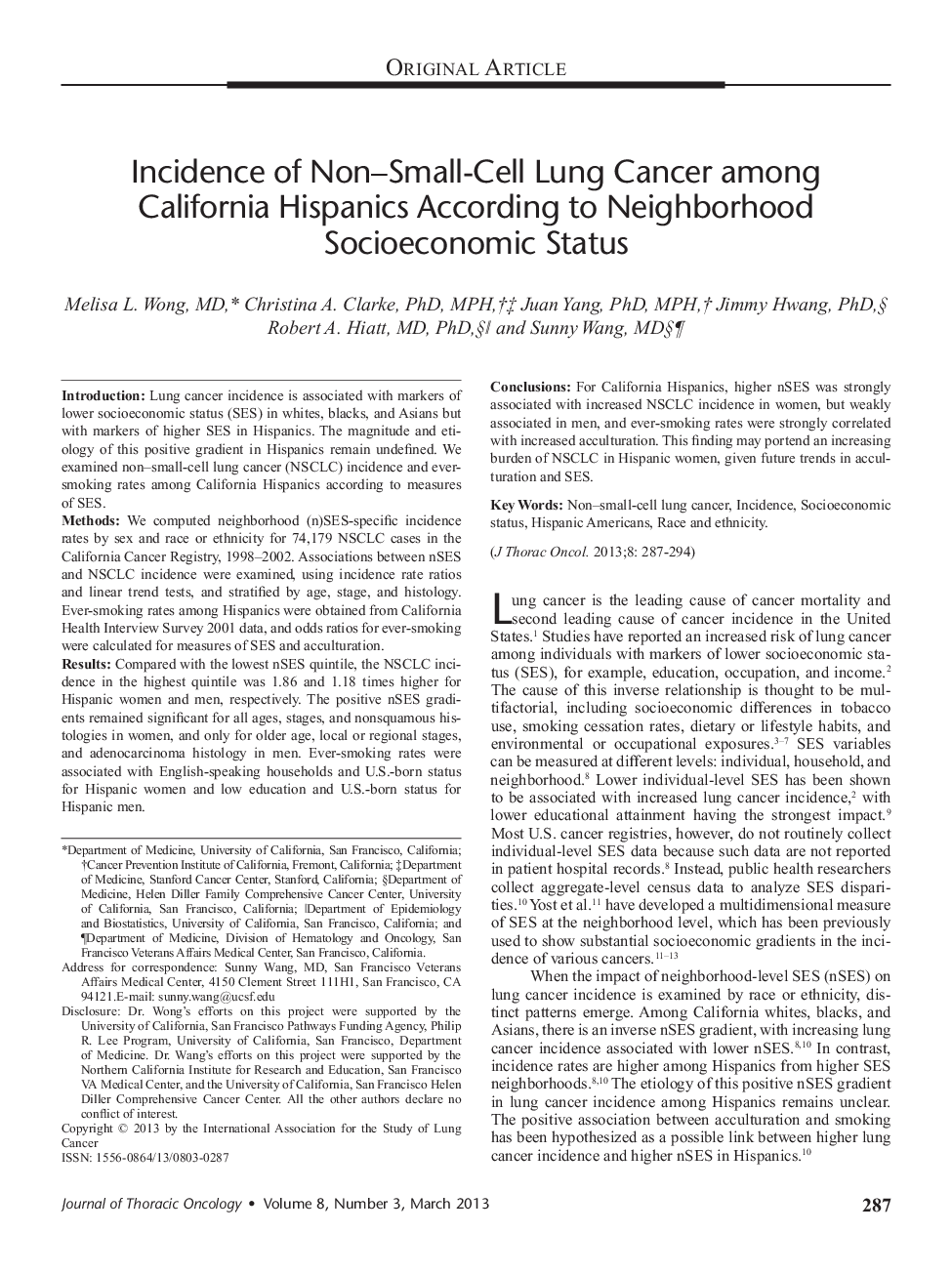| Article ID | Journal | Published Year | Pages | File Type |
|---|---|---|---|---|
| 3990072 | Journal of Thoracic Oncology | 2013 | 8 Pages |
IntroductionLung cancer incidence is associated with markers of lower socioeconomic status (SES) in whites, blacks, and Asians but with markers of higher SES in Hispanics. The magnitude and etiology of this positive gradient in Hispanics remain undefined. We examined non–small-cell lung cancer (NSCLC) incidence and ever-smoking rates among California Hispanics according to measures of SES.MethodsWe computed neighborhood (n)SES-specific incidence rates by sex and race or ethnicity for 74,179 NSCLC cases in the California Cancer Registry, 1998–2002. Associations between nSES and NSCLC incidence were examined, using incidence rate ratios and linear trend tests, and stratified by age, stage, and histology. Ever-smoking rates among Hispanics were obtained from California Health Interview Survey 2001 data, and odds ratios for ever-smoking were calculated for measures of SES and acculturation.ResultsCompared with the lowest nSES quintile, the NSCLC incidence in the highest quintile was 1.86 and 1.18 times higher for Hispanic women and men, respectively. The positive nSES gradients remained significant for all ages, stages, and nonsquamous histologies in women, and only for older age, local or regional stages, and adenocarcinoma histology in men. Ever-smoking rates were associated with English-speaking households and U.S.-born status for Hispanic women and low education and U.S.-born status for Hispanic men.ConclusionsFor California Hispanics, higher nSES was strongly associated with increased NSCLC incidence in women, but weakly associated in men, and ever-smoking rates were strongly correlated with increased acculturation. This finding may portend an increasing burden of NSCLC in Hispanic women, given future trends in acculturation and SES.
